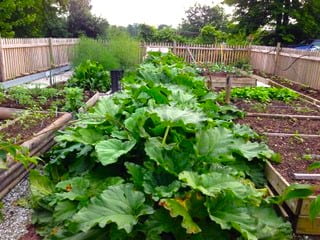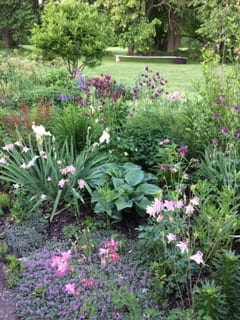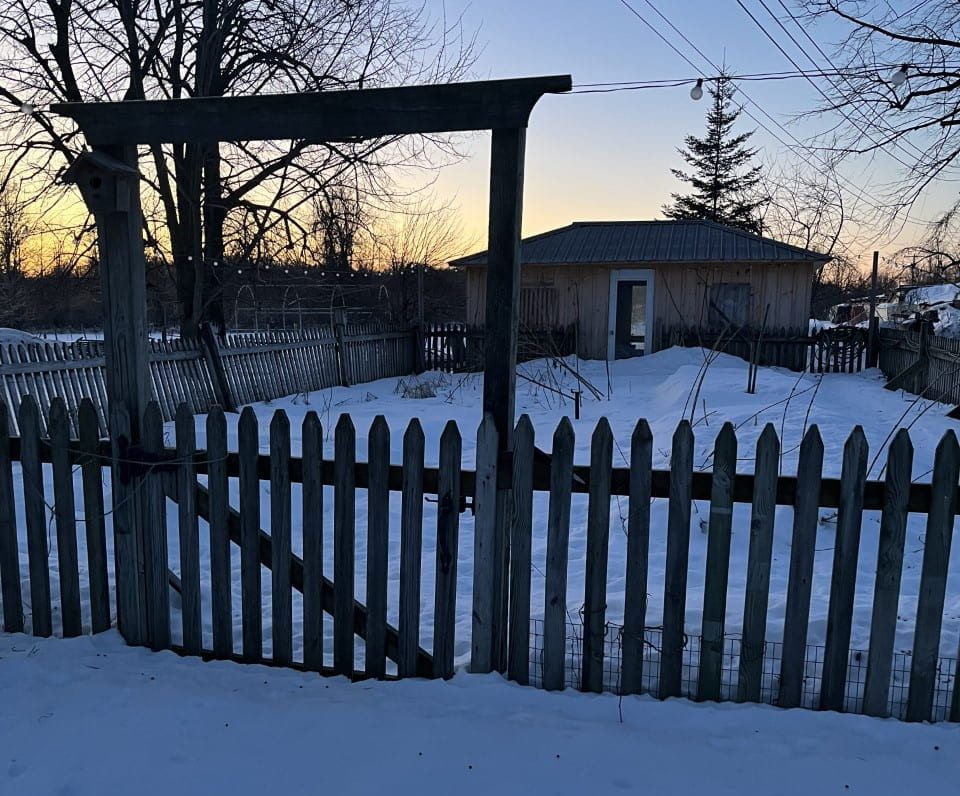With a new cohort of Master Gardener Volunteers beginning to serve their community, we’d like to introduce them (AND YOU!) to the group of MGVs who have sustained this program for the last several years. Meet Loni Recker!
What is your gardening background?
I was born into a gardening family. I can still remember my great-grandmother’s beautiful gardens. My grandmother and mother carried on the tradition and my father is an amazing gardener as well. I think gardening was decided for me and I’m thankful for that.

What benefits do you gain from gardening?
I love puttering, propagating, and tending so gardening is a natural avenue for all of those activities. I love meeting other gardeners and sharing plants, knowledge, and stories. I have a picket fence around a set of raised beds with paths. My garden shed door opens into the garden on the opposite side of the entrance gate. There is a string of lights surrounding that garden. When I open the gate, I feel as if I enter a special place that is separate from my realms of responsibility. I put away all thoughts of what I must do and allow myself to tend and cultivate as a form of deep relaxation.

Why did you want to become a Master Gardener Volunteer?
I get asked a lot of gardening questions and I felt I should make sure the answers I give are correct. Through my Master Gardener Volunteer (MGV) training in 2013 I gained knowledge and more importantly I was introduced to a wealth of trustworthy resources. I rely on those resources, on our ongoing educational meetings, as well as the abundance of knowledge of my MGV cohort.
In what ways do you serve as a MGV?
Though I often answer questions about gardens and plant identification, my real passion is the Ogdensburg Youth Garden Club, which I have led for 26 years. I use my teaching and gardening skills to engage children in all things to do with gardening and I know our club has changed the lives and trajectories of many students. One of our graduates gained a passion for horticulture through the years of participating in our youth group. He joined us in 3rd grade and left when he went to college eventually earning his PhD in horticulture.

We have graduates of the club who stay in touch and continue to support the program through financial donations and through volunteering. Gardening is an activity that can be performed intergenerationally, for personal enjoyment, to beautify a community, or professionally. It truly is boundless. I want children to be aware of that and to know they can cultivate beauty in their lives.
What do you grow and what are your specialties in the garden?

I grow perennials, bulbs, tubers, rhizomes, annuals, vegetables, shrubs, trees, and herbs. I’ve been collecting bearded irises as I find them stunning. My great-grandmother loved them and I feel that connection each time I admire a bloom. I’ve been having fun adding new varieties of hostas and dahlias to my gardens. I have five gorgeous magnolia trees that bring me great pleasure, and have been working on having blooms for pollinators as long as seasonally possible. With both a spring witch hazel which blooms in early April, and a fall witch hazel that blooms into November, something is flowering here from April through November!
What are you learning about now in the gardening realm, and what do you want to learn more about?
I recently started winter sowing and had great success with some plants but failure with others, so I’d like to understand what went wrong. I also collect many varieties of seeds and am learning what each variety needs for germination. I would like to get better at propagation, and have enjoyed taking cuttings of shrubs like forsythia. I would like to research sources of fish emulsion fertilizer, perhaps even a local one! One of the ways I continue learning is by asking gardeners about their own proven techniques and their failures.
I love working alongside gardeners who are as interested in growing their communities as they are in growing their individual gardens.

